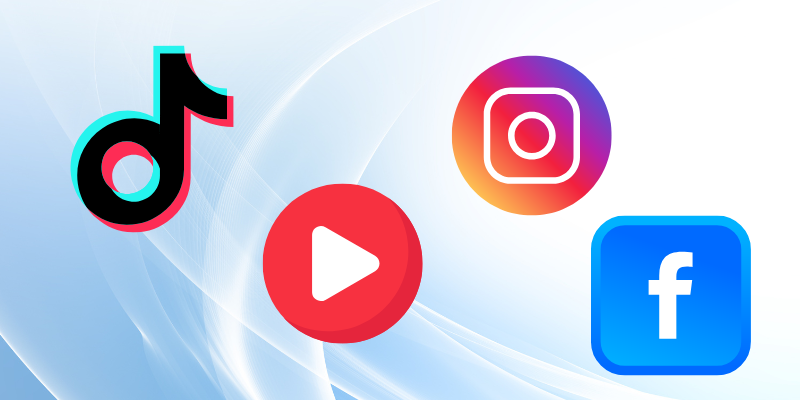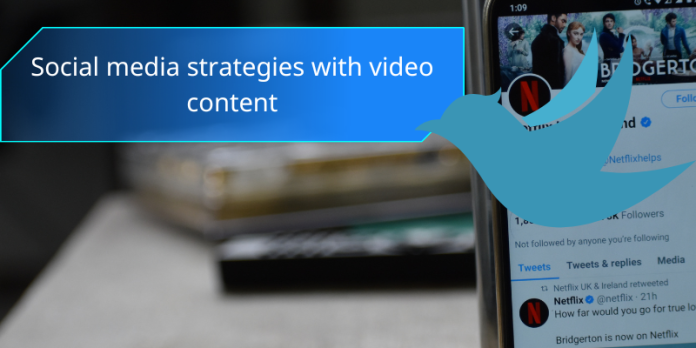Did you know video posts get 1200% more shares than text and images combined? If your social media strategy doesn’t put video at the center, you’re leaving massive engagement on the table. In this article, we explore social media strategies with video content to win marketing goals.
Decoding Your Audience and Crafting Your Product Story

Know Who’s Watching
Platforms like Instagram and TikTok thrive on different engagement triggers—Instagram’s algorithm favors polished, high-quality visuals, while TikTok rewards raw, relatable moments. A 2023 study by HubSpot found that 62% of marketers repurpose video content across platforms, but only 34% tweak messaging to fit each audience. Start by analyzing your Twitter video’s performance: Which demographics engaged most? Did humor or education drive shares? Analytics tools l can reveal these insights, letting you tailor captions, pacing, or even aspect ratios for Instagram’s square frames or TikTok’s vertical scroll.
Turn Features Into Narratives
Your product’s specs won’t resonate unless wrapped in a story. Take GoPro’s strategy—they don’t sell cameras; they sell adrenaline-fueled adventures. When repurposing a Twitter tutorial into a TikTok clip, zoom in on one pain point (e.g., “Struggling with low-light footage?”) and pair it with a quick fix. Blend text overlays with trending sounds to boost discoverability. For YouTube, expand the narrative: Use SnapTwitter to download your original Twitter video, then splice in B-roll or testimonials to create a deeper dive.
Selecting the Perfect Digital Venues
Your video content’s success hinges on choosing platforms that amplify your message to the right audience. Instagram’s visual-centric feed thrives on polished, high-energy clips, while TikTok rewards raw, trend-driven creativity. YouTube’s algorithm favors longer-form, searchable content, making it ideal for tutorials or deep dives. Twitter’s fast-paced environment demands concise, attention-grabbing videos—often under 60 seconds.

The Platforms that Align with Your Brand
Match your brand’s voice to each platform’s culture. Luxury brands flourish on Instagram with sleek visuals, while meme-heavy accounts dominate TikTok. B2B marketers leverage LinkedIn for thought leadership clips, and lifestyle creators use Pinterest’s shoppable videos. SnapTwitter’s download tool lets you adapt Twitter videos seamlessly—trim a viral tweet recap for Instagram Stories or expand it into a YouTube tutorial with added context.
Understanding Platform Demographics and Content Styles
Gen Z dominates TikTok (60% of users are 16–24), favoring quick, relatable clips, while Instagram’s audience skews slightly older (25–34) and engages with curated aesthetics. YouTube’s broad reach includes 81% of U.S. adults, ideal for evergreen content. Twitter’s power users are journalists and influencers, so newsy or opinion-driven clips perform best. Adapt your Twitter videos by adding captions for TikTok’s sound-off viewers or hashtags for Instagram’s discoverability.
Dive deeper into demographics: Pinterest’s 80% female user base craves DIY and inspiration, while LinkedIn’s professionals prefer data-driven snippets. Case in point: A Shopify study found square videos on Instagram generate 30% more engagement than landscape. Use SnapTwitter to resize Twitter videos into these formats, ensuring your content feels native to each platform’s unique ecosystem.
Blueprint for Compelling Video Content
Creating engaging video content starts with a clear structure—hook viewers in the first 3 seconds, deliver value quickly, and end with a strong CTA. Platforms like TikTok and Instagram prioritize fast-paced, visually striking clips, so trim unnecessary fluff. For example, repurposing a Twitter video for Reels? Cut the intro and overlay trending audio to boost discoverability. SnapTwitter’s X video downloader lets you grab high-performing clips to analyze pacing and editing styles that work.
Developing a Robust Content Strategy
Map out a content calendar aligned with platform algorithms—posting Reels at peak times (9 AM or 7 PM) can increase reach by 30%. Balance evergreen tutorials with trending challenges; a skincare brand might mix “how-to” clips with duets using #GlowUp sounds. Use SnapTwitter to archive competitor videos and reverse-engineer their posting frequency for insights.
Generating Actionable Ideas Supported by Data
Leverage analytics to identify what resonates—check Instagram’s “Top Performing Reels” or Twitter’s engagement rates. If how-to videos drive 2x more shares than testimonials, double down on educational content. Using video downloaders can help you download and dissect top-performing videos in your niche, revealing patterns like ideal length (15-30 seconds for TikTok) or text placement.
Dive deeper by cross-referencing platform metrics with third-party tools like Google Trends. A fitness creator might notice “home workouts” spiking in searches—pairing this with TikTok’s “Most Liked” filter reveals trending formats, like looped demos. SnapTwitter’s library lets you save these examples to replicate successful hooks or transitions in your edits.
Mastering the Art of Video Production
High-quality video production starts with understanding your platform’s technical requirements—Instagram favors square or vertical formats, while YouTube thrives on landscape. Lighting and audio make or break engagement; 92% of viewers prioritize clear sound over visual polish. Use natural light or affordable LED panels, and invest in a lavalier mic for crisp dialogue. Storyboarding ensures your shots align with your narrative, saving hours in post-production. Tools like SnapTwitter’s video downloader let you analyze top-performing clips for inspiration, adapting their techniques to your workflow.

Techniques for Captivating Filmmaking
Dynamic angles and movement keep audiences hooked—try a 45-degree Dutch tilt for tension or a slow dolly-in for emphasis. The rule of thirds applies to video just as it does to photos; position key elements along gridlines for balanced compositions. Case in point: TikTok creators who use jump cuts and transitions like the “zoom shake” see 30% higher completion rates. Experiment with B-roll overlays to add depth, and always shoot 10-15% more footage than you think you’ll need to avoid gaps in editing.
Skills for Flawless Video Editing
Editing transforms raw clips into polished stories. Master keyboard shortcuts in tools like Premiere Pro or CapCut to trim timelines 50% faster. Color grading sets mood—cool tones work for corporate content, while warm filters boost lifestyle clips’ appeal. Jump cuts maintain pace, but overuse feels jarring; blend them with J-cuts (audio leading visuals) for smoother flow. Export settings matter: H.264 at 1080p balances quality and load speed, critical for platforms like Instagram with strict autoplay thresholds.
Layering audio tracks separates dialogue, music, and effects, preventing muddiness. For example, lowering background music by 6dB during voiceovers ensures clarity. Use SnapTwitter’s downloader to grab reference videos and dissect their edit patterns—notice how top creators often place key moments within the first 3 seconds. Always preview edits on mobile devices; 78% of social video is consumed on phones, and sizing errors (like cropped text) kill engagement.
Riding the Wave of Trending Content
Trending content gives your videos instant visibility, but only if you act fast. Platforms like TikTok and Instagram prioritize timely trends, with videos tied to viral challenges or memes often seeing 2-3x higher engagement. Use SnapTwitter’s download tool to grab trending clips from Twitter and adapt them for other platforms—just add your unique spin to stand out without losing relevance.
Identifying and Incorporating Popular Trends
Monitor platform-native trend hubs like TikTok’s Discover page or Instagram’s Reels tab to spot rising themes early. For example, food brands jumping on the “mukbang” trend saw a 40% boost in shares last year. Align trends with your niche—fitness creators can adapt dance challenges into workout routines, while marketers might tie viral sounds to product demos.
Leveraging Hashtags and Sound Trends for Maximum Impact
Pairing your video with trending hashtags and sounds can triple its reach. Research shows TikTok videos using top 10 trending sounds gain 89% more views. Tools like SnapTwitter let you extract audio from viral Twitter clips to reuse in Reels or YouTube Shorts—just ensure the sound fits your message. For hashtags, mix broad trends (#Viral) with niche tags (#SmallBusinessTips) to balance discoverability and audience targeting.
Brands like Gymshark grew their TikTok following by 500% in 6 months by remixing trending sounds into workout tutorials. Test 2-3 variations of a trend—like using the same audio for a behind-the-scenes clip and a polished ad—to see what resonates. Track performance through platform analytics to refine your strategy over time.
Smart Strategies for Optimizing Video Engagement
Maximizing engagement starts with understanding platform algorithms—shorter videos (under 60 seconds) on TikTok and Instagram Reels often outperform longer content, while YouTube favors watch time. Use SnapTwitter’s download tool to trim and reformat clips for each platform, ensuring crisp pacing. A/B test posting times; data from Hootsuite shows weekdays between 9 AM–12 PM drive 20% higher engagement for B2C brands. Hook viewers in the first 3 seconds with bold text overlays or unexpected visuals—TikTok’s “fast-start” videos see 1.7x more shares.

Crafting Irresistible Captions and Timely Posts
Pair your video with captions that spark curiosity or action—questions like “Guess what happens next?” increase comments by 35%. Emojis and hashtags (2–3 per post) boost discoverability without cluttering the message. Sync posts with trending sounds or challenges; a Sprout Social study found timed participation in viral trends lifts reach by 50%. For evergreen content, repurpose Twitter clips with fresh captions highlighting different angles, like “The behind-the-scenes version you haven’t seen.”
Techniques for Increasing Views and Interaction
Leverage interactive features—polls in Instagram Stories or pinned comments on YouTube can double engagement rates. Collaborate with micro-influencers (10K–100K followers) for authentic shares; their audiences deliver 60% higher click-throughs than macro-influencers. Cross-promote snippets as teasers: Upload a 15-second clip to Twitter with a “Full video on TikTok” CTA, driving traffic between platforms. Analytics tools like heatmaps reveal where viewers drop off, letting you refine cuts or add captions to retain attention.
Geo-targeting boosts local relevance—Facebook ads with location-specific offers see 40% more saves. Loopable content (e.g., tutorials or quick tips) encourages replays, signaling algorithm favor. For tutorials, overlay step numbers directly into the video; LinkedIn reports this format increases completion rates by 28%. Always end with a clear directive: “Tag someone who needs this” or “Drop a 🔥 if you agree” prompts immediate interaction, pushing your content into more feeds.
Explore: Tools for Twitter marketing
The Power of Content Repurposing and Performance Review
Repurposing video content maximizes your efforts by extending its lifespan across platforms. A single Twitter video can become an Instagram Reel, a TikTok trend, or a YouTube Short—each tailored to platform-specific audiences. Brands like Nike have seen engagement spikes by reformatting vertical clips for TikTok, proving that strategic repurposing drives consistent reach. Performance reviews help identify which formats resonate, allowing you to refine your approach based on metrics like views, shares, and completion rates.
Transforming Existing Content into New Formats
Break down long-form Twitter videos into 15-60 second clips optimized for Instagram Reels or TikTok. Add captions for silent viewing, overlay trending audio, or splice in B-roll for dynamic edits. For example, a 2-minute Twitter interview can yield three TikTok snippets highlighting key quotes. Tools like SnapTwitter let you download and trim videos effortlessly, ensuring seamless transitions between platforms without losing quality.
Aligning Your Progress with Initial Goals
Compare your repurposed content’s performance against original KPIs—whether it’s increasing followers, driving clicks, or boosting engagement. If a Twitter video gained traction but its TikTok remake underperformed, analyze differences in captions, hashtags, or posting times. Adjustments like these helped BuzzFeed grow its TikTok audience by 200% within six months by refining repurposing tactics.
Dive deeper into metrics like watch time and audience retention to pinpoint what works. If Instagram Reels derived from Twitter content show higher drop-off rates at the 10-second mark, experiment with faster hooks or tighter edits. Regularly auditing these insights ensures your repurposing strategy stays aligned with overarching marketing objectives, turning recycled content into sustained growth.

